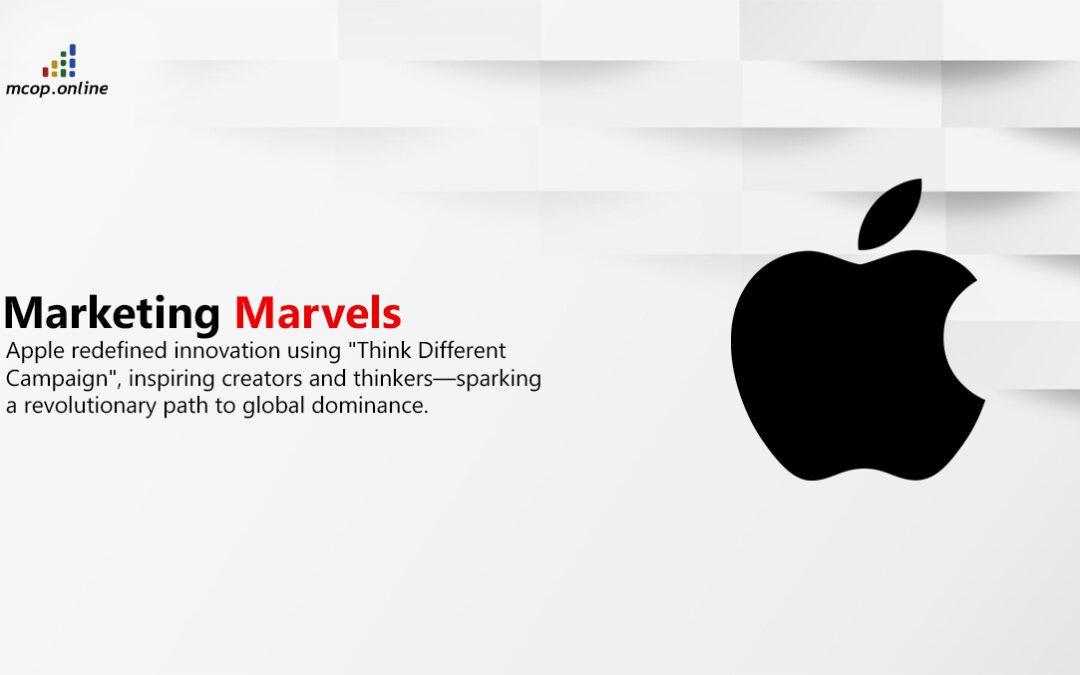In 1997, Apple faced significant challenges. Financial struggles, lack of direction, and fierce competition from Microsoft put the company at risk. The “Think Different” campaign, introduced under Steve Jobs, marked a turning point. It shifted Apple’s trajectory, turning it from a struggling brand into a global leader.
A Bold, Simple Message
The “Think Different” campaign carried a powerful message: challenge the norm and embrace creativity. It spoke directly to those who wanted to break free from conventional thinking and forge their own path. Featuring iconic figures like Albert Einstein, Mahatma Gandhi, John Lennon, and Martin Luther King Jr., Apple aligned its brand with the most revolutionary minds in history. The campaign made clear that Apple represented those who dared to make an impact.
Redefining Apple’s Identity
Before Think Different, Apple was known mostly as a brand for creative professionals—graphic designers, musicians, and artists. This loyal, niche audience limited Apple’s reach. The Think Different campaign reshaped this identity, positioning Apple as a brand for anyone eager to challenge the norm. Its bold visuals and clear message indicated that Apple’s products were tools for anyone who wanted to innovate, regardless of their profession.
Aligning with Apple’s Core Values
The Think Different campaign perfectly reflected Apple’s core values of creativity and innovation. While other tech brands focused on product features, Apple emphasized the transformative potential of its technology. The campaign showcased Apple’s products as more than just tools—they were instruments for pushing boundaries and enabling new ways of thinking.
The Impact: A Rebirth for Apple
The Think Different campaign immediately altered public perception of Apple. It successfully repositioned the brand, turning it into an icon of creativity and innovation. This shift led to a rise in consumer interest and increased sales. The campaign also played a role in Steve Jobs’s return to Apple in 1997, which sparked a new era of innovation. Jobs’s leadership led to products like the iPod, iPhone, and iPad—game-changing devices that would dominate the market for years to come.
The emotional appeal of the Think Different campaign was key to its success. By connecting Apple with figures known for their defiance of convention, the campaign built an emotional connection with consumers. Apple wasn’t simply selling products—it aligned with the values of rebellion, progress, and creativity.
Lasting Legacy: A New Era in Advertising
The Think Different campaign set a new standard in advertising. Apple moved away from traditional, product-focused marketing and embraced emotionally resonant storytelling. The campaign focused on the aspirations of its audience, showing how Apple’s products could empower people to push boundaries and think outside the box.
This approach changed the way brands connected with consumers. By emphasizing emotions and values over technical specifications, Apple created a brand that resonated deeply with its audience. The Think Different campaign reshaped the advertising landscape, influencing future marketing strategies in the tech industry and beyond.
The Impact Beyond Apple
The Think Different campaign became more than just a marketing strategy—it sparked a larger cultural conversation about creativity and individuality. It showed that innovation doesn’t always come from following the crowd, but from daring to think differently. Apple’s message of non-conformity and bold thinking extended beyond technology, touching a wide range of industries and inspiring people worldwide to challenge the status quo.
And It Was Apple’s Rebirth
The Think Different campaign played a critical role in Apple’s transformation. It repositioned the company as a brand synonymous with creativity, innovation, and individuality. By aligning its products with these values, Apple not only reshaped its identity but also set the stage for its dominance in the tech world. The campaign remains a cornerstone of Apple’s legacy, influencing the company’s approach to branding and marketing even today. What’s your thought on this??

